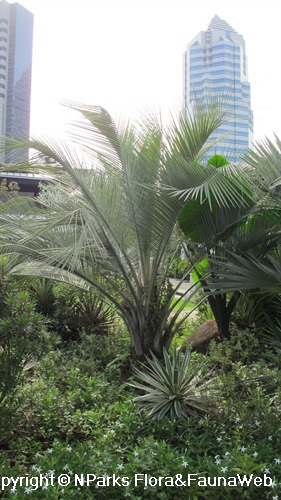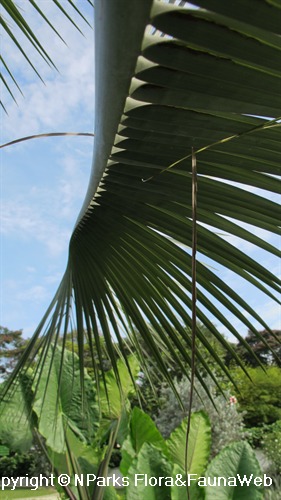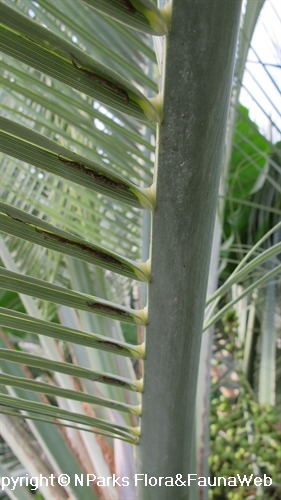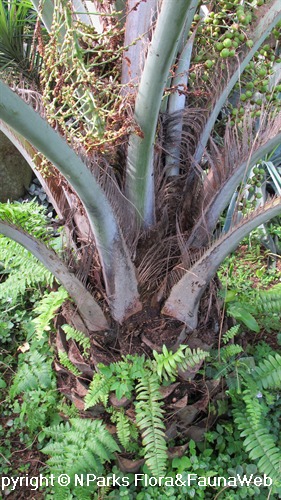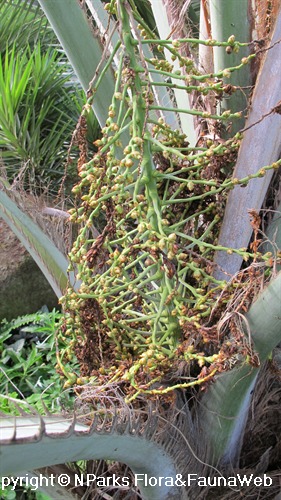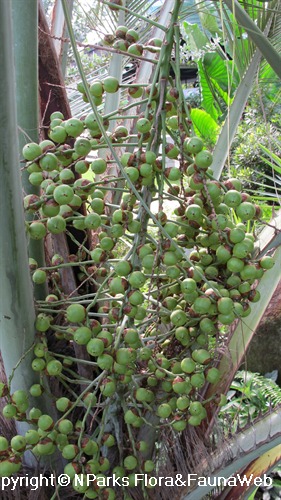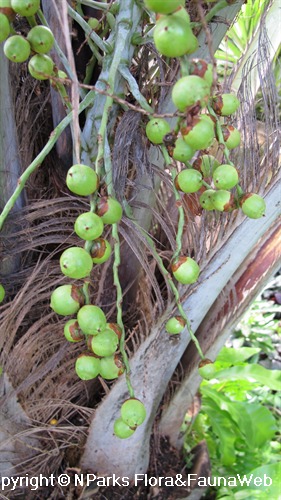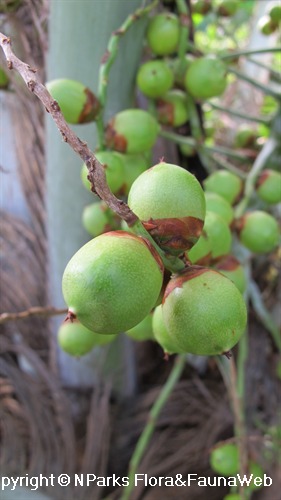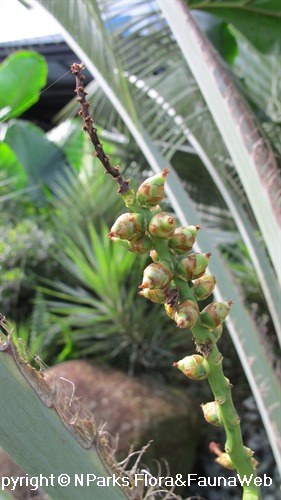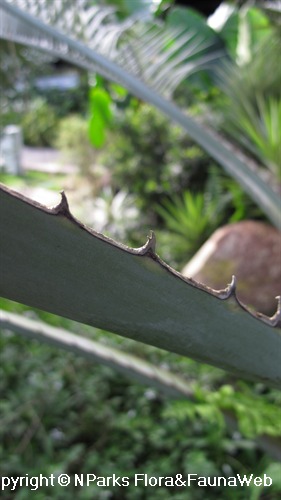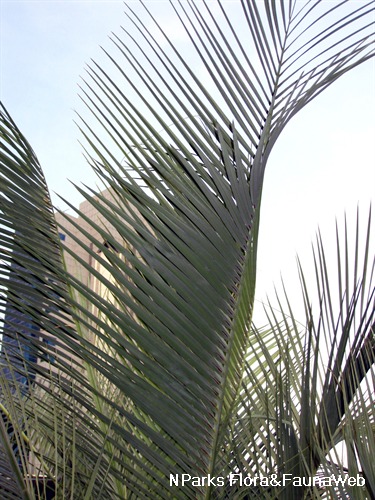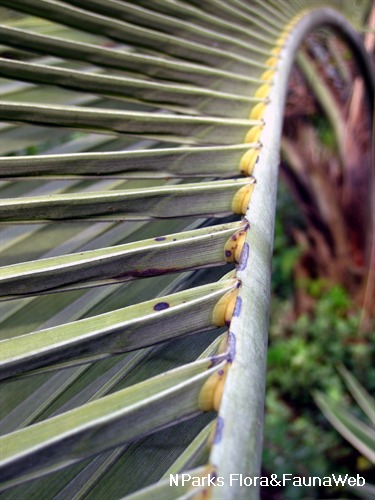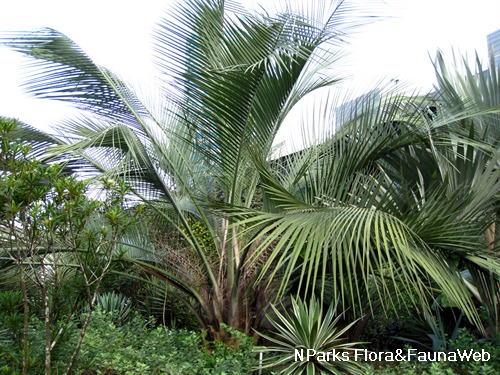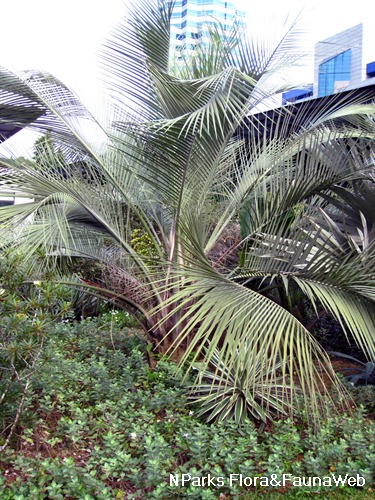
Back
Butia capitata
| Family Name: | Arecaceae (Palmae) |
| Synonyms: | Butia capitata var. erythrospatha, Butia capitata var. virescens, Butia capitata var. elegantissima, Butia capitata var. subglobosa, Cocos elegantissima, Cocos lilaceiflora, Cocos leiospatha, Cocos pulposa, Butia capitata var. nehrlingiana |
| Common Name: | Butià, Wine Palm, Jelly Palm, Pindo Palm |
Name
Classifications and Characteristics
| Plant Division | Angiosperms (Flowering Seed Plants) (Monocotyledon) |
|---|---|
| Plant Growth Form | Palm (Solitary Habit) |
| Mode of Nutrition | Autotrophic |
| Maximum Height | 6.1 m |
| Maximum Plant Spread / Crown Width | 3 m |
| Tree or Palm – Trunk Diameter | 0 |
Biogeography
| Native Distribution | South America |
|---|
Description and Ethnobotany
| Growth Form | A stunningly outstanding, slow but steady-growing, feather palm with a solitary, thick, stout trunk bearing a rounded crown of characteristically long, recurving fronds of bluish-green, capable of producing large masses of showy, bright orange, juicy, edible fruits. |
|---|---|
| Trunk | Stem solitary, thick, stout, woody, grey, 0.3 to 0.5 m in diameter, often heavily textured with old leaf sheathes (though specimens with with a clean trunk are relatively common); crownshaft absent. |
| Foliage | Fronds pinnate (featherlike), reaching up to 3 m long or more, bluish green, strongly recurved; leaf sheathes 0.6 to 1.2 m, armed with hooked thorns along both edges. |
| Others - Plant Morphology | Flower: Inflorescences multi-branched, cream to red, 0.9 to 1.2 m long, with glaucous (bluish-white; covered or whitened with a very fine, powdery substance), glabrous (smooth; not rough, pubescent or hairy) spathes, emerging from amongst the fronds, bearing 50 to 100 flowers; flowers appear in groups of three (2 males for one female), 3 to 8 mm long; petals 3; sepals 3; stamens 6. Fruit: Fruits ovoid or ellipsoid, ripening from green to bright yellow or orange, sometimes with a reddish tinge, 1.5 to 2.5 cm long, fleshy, edible, single-seeded, fragrant (reminiscent of apricots and a pineapple-banana mixture). |
| Cultivation | Notable as one of the hardiest and most versatile feather palms, it tolerates extreme temperatures of both ends. Prefers well-drained and organic matter-rich soils but is adaptable and tolerates drought, salt, and soils that are slightly acidic or alkaline. Can be transplanted easily. Can also be grown indoors if light intensity is high enough (though too much shade will result in longer, larger and 'greener' fronds). Regular watering and fertilising will hasten growth and improve appearance. Propagated by seeds that germinate in 6 to 8 months. Pre-soaking can ease germination and shorten the duration. |
| Etymology | Genus epithet derives from a Portuguese corruption of an aboriginal term meaning 'spiny', which is a probable reference to the spiny appearance (especially the feathery fronds with narrow, stiff leaflets) of all species in the genus. Its species epithet means 'with a head' or head-shaped' in Latin, which is an allusion to the shape of the leaf crown. It is commonly known as 'Jelly Palm' and 'Wine Palm' because its fruits are used to make jelly and liquor, hence the respective names. |
| Ethnobotanical Uses | Others: Food: Delicious, ripened fruits can be eaten fresh, prepare as a soft puree, or to use to make jelly or jam. The fruits are also known to be macerated in alcohol to make popular liquor. The ground seed can be roasted and serve as a substitute to coffee. |
Landscaping Features
| Landscape Uses | Coastal |
|---|
Plant Care and Propagation
| Light Preference | Full Sun |
|---|---|
| Water Preference | Moderate Water |
| Plant Growth Rate | Moderate |
| Rootzone Tolerance | Saline Soils / Salt Spray, Drought Tolerant |
Foliar
| Mature Foliage Colour(s) | Silver / Grey |
|---|---|
| Foliar Shape(s) | Palm Fronds (Pinnate / Feather) |
| Leaf Area Index (LAI) for Green Plot Ratio | 2.5 (Palm - Solitary) |
Non - Foliar and Storage
| Trunk Type (Palm) | Solitary Habit, Aboveground |
|---|
Floral (Angiosperm)
| Flower Colour(s) | Cream / Off-White, Red |
|---|
Fruit, Seed and Spore
| Mature Fruit Colour(s) | Orange, Yellow / Golden |
|---|
Image Repository
Others
| Master ID | 1310 |
|---|---|
| Species ID | 2603 |
| Flora Disclaimer | The information in this website has been compiled from reliable sources, such as reference works on medicinal plants. It is not a substitute for medical advice or treatment and NParks does not purport to provide any medical advice. Readers should always consult his/her physician before using or consuming a plant for medicinal purposes. |

